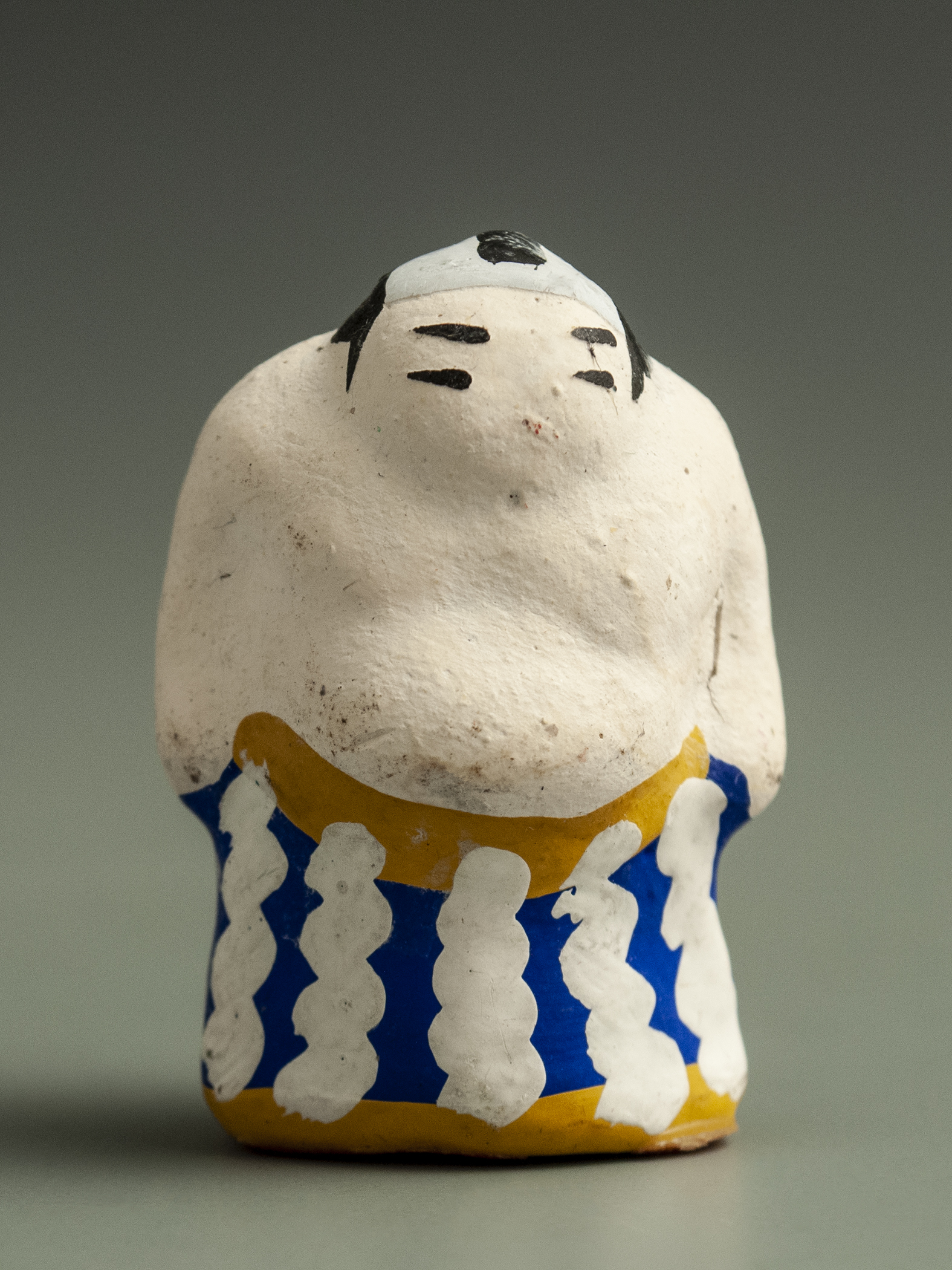Sumo Wrestler
Japan, 1994

During my first visit to Japan, a sensation erupted in the umo world. The Hawaiian-born Konishiki—then only 20 years old—was defeating Japan’s best wrestlers, and threatening to become the first non-Japanese-born person to attain the rank of zeki: the penultimate title in the sumo pyramid. Weighing in at 606 lbs., Konishiki could knock over his opponents with ease. His nickname was “The Dump Truck.”
There’s something deliciously peaceful about watching a sumo match. The vast energy and precise strategy of the combatants is belied by their enormous weight, which can give a honbasho—to the uninitiated—the sad hilarity of a freak show. I only attended one match, in Kyoto, and it seemed simultaneously majestic and balletic to me.
After the bouts, I waited in the vestibule with dozens of other fans, hoping for the chance to to pat Konishiki’s haunch—or whatever part of his voluminous physique I could reach—as he lumbered back to the “stable.” He waddled by smiling, his flesh undulating from our congratulatory slaps.
A year later, my friend Nick and I watched a monsoon storm coalesce above the Kathmandu Valley. The clouds were huge, pale and bulbous, and as a pair of them tussled I told Nick of the umo bouts I’d watched in Japan. Here, though, the warriors were weightless.
“Nothing could be further from the truth,” Nick said in surprise. “Clouds are the heaviest things around. Imagine how much water is in that thunderhead: millions of gallons! At eight pounds a gallon, your average thunderhead probably weighs half a million tons.”
Some people believe science is the antithesis of magic; a little knowledge makes the miraculous seem drab. Stars are nuclear furnaces; rainbows appear through the diffraction of water droplets. Love is a chemical reaction; our lovers themselves evolved from apes. And a drifting white cloud weighs as much as a container ship.
Do you see that one up there? It looks like a cherry-blossom tree.
